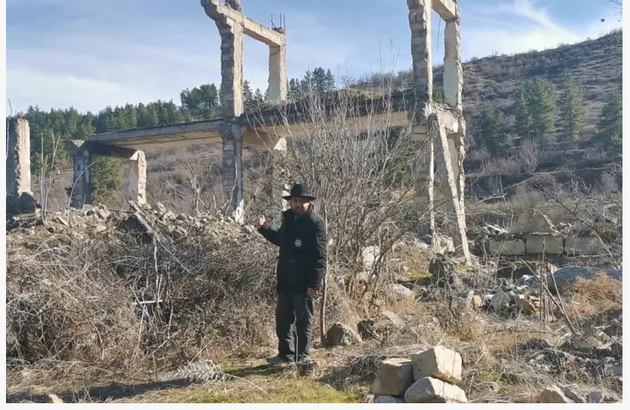The conflict between Armenia and Azerbaijan over the Nagorno-Karabakh region in October was simply the latest in a long history of tension and conflict between the two neighbors, and the scars and devastation wrought by this long history still remains today, an Israeli-raised rabbi found out when he was allowed to tour part of the area Azerbaijan liberated in the conflict, The Jerusalem Post writes. Born in the Azeri capital of Baku, Rabbi Zamir Isayev was raised in Israel, but moved back to the city of his birth and became director of the capital's Jewish School, whose many graduates took part in the conflict against Armenia. This was his primary motivation for visiting the liberated areas.
“It was important for me to be able to see firsthand the places my former students fought to liberate,” he said in a statement. “Jews that fight in the Azeri army are the pride of our community and the entire country.”
The most important stop on the tour was Zangilan, a city on the Azeri-Iranian border that is the administrative center of the district of the same name. The city had been in Armenian hands since 1993 after the first Nagorno-Karabakh War, though de facto control was in the hands of the unrecognized nation known as the Republic of Artsakh, also known as the Republic of Nagorno-Karabakh.In the October 2020 conflict, Azerbaijan was able to liberate the territory – which, unlike many other areas that had been contested between Armenia and Azerbaijan, was never historically part of Nagonro-Karabakh. Now, its nearly 43,000 former residents can at last return home after a nearly 30-year absence.
But as Isayev found out, there isn't exactly much to return to, as nearly the entire city was destroyed by the Armenian army in 1993. “I came to witness a virtual ghost town, a completely destroyed city that lay in ruins for nearly 30 years,” he explained. “Most of its structures have essentially been demolished. The Armenian occupiers clearly had no plans to settle here and only sought to destroy the site, proving that they never regarded this land as their own.” Isayev detailed his tour in a short film, which he uploaded to Twitter featuring subtitles in English, Hebrew and Russian.
Azerbaijan has gotten to work reconstructing the newly-liberated territories.






